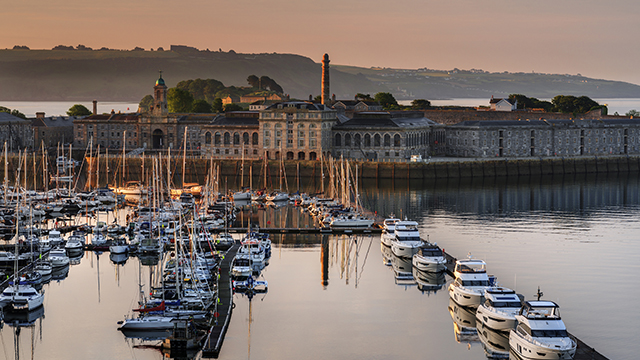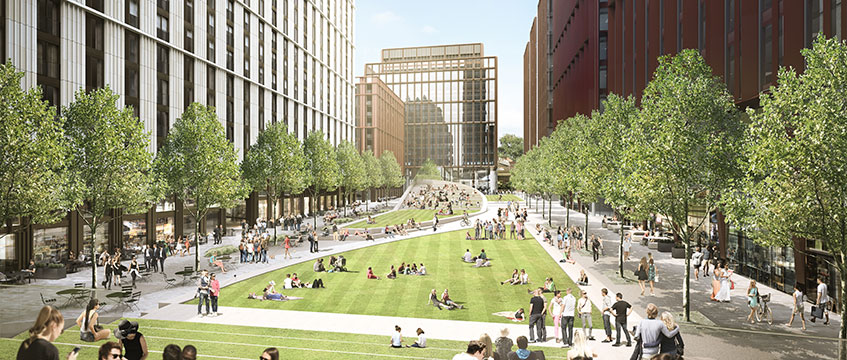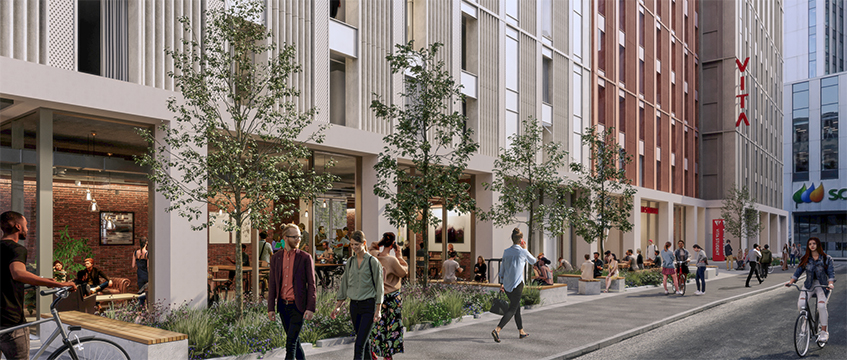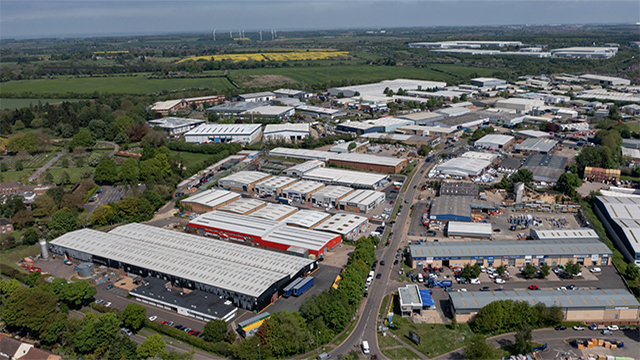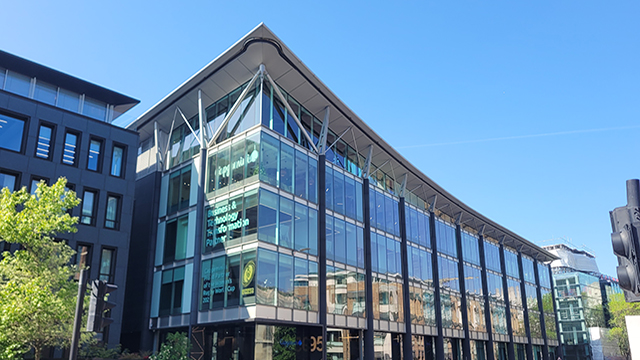Is development drying up in Manchester?
When Manchester City Council rejected former England cricketer Andrew Flintoff’s 35-storey tower proposal in Castlefield last month, it came as a rare surprise.
The council, with a decades-long reputation for being pro-development, rejected officer recommendations and put a stop to the development, arguing it would overshadow the nearby conservation area. It seemed unusual, given the city’s history.
For more than 20 years, Manchester has grown and thrived, largely due to the partnership between Sir Howard Bernstein, the city’s chief executive from 1998 to 2017, and Sir Richard Leese, leader of the city council since 1996.
When Manchester City Council rejected former England cricketer Andrew Flintoff’s 35-storey tower proposal in Castlefield last month, it came as a rare surprise.
The council, with a decades-long reputation for being pro-development, rejected officer recommendations and put a stop to the development, arguing it would overshadow the nearby conservation area. It seemed unusual, given the city’s history.
For more than 20 years, Manchester has grown and thrived, largely due to the partnership between Sir Howard Bernstein, the city’s chief executive from 1998 to 2017, and Sir Richard Leese, leader of the city council since 1996.
As Leese recalls, Manchester was a declining industrial city in the late 1980s and the council had to tackle what it saw as the causes of deprivation.
“We needed places for people to work and places for people to live, and that meant having a positive relationship with the development industry,” he says.
Decades later, cranes fill the skyline and districts that developers would not previously touch have become lively commercial centres.
Bernstein’s reputation for championing the city’s expansion and infrastructure earned him a knighthood. But as the space inside the Manchester ring road inches towards saturation and with Bernstein leaving the council last year, the question is where does development go from here? Does the city still offer the same opportunities?
Ringfenced
For some in the industry, Manchester is nearing the end of an era that started in the mid-1990s. Three decades ago, the city’s development was largely constrained within a small area surrounded by Market Street, Mosley Street and Cross Street.
Ken Bishop, development and agency consultant at JLL, says: “It was a stranglehold on the city’s growth. When there was any form of recession, people ran back to the fort.”
When times were good, developers would venture outside those walls, but at any sign of economic turmoil the industry would retreat from what it saw as “problematic” areas.
[caption id="attachment_952327" align="aligncenter" width="847"] Barbirolli Square[/caption]
It was only in 1996-97, as Barbirolli Square came out of the ground outside the core, that the industry started to seriously emphasise the importance of buildings over location.
In 2000, Allied London launched Spinningfields in the west of the city in the face of widespread scepticism – it was, after all, a 20-minute walk from Piccadilly station.
Phil Mayall, north west regional director at Muse, recalls how transformational Barbirolli Square and Spinningfields were.
“With Barbirolli Square, people said nobody would move there And at Spinningfields they said: ‘What occupiers would go to the other side of Deansgate?’ But now you’re seeing places become destinations in their own right,” says Mayall.
The success of those schemes – just last year Schroders spent £200m buying No.1 Spinningfields – coincided with Leese and Bernstein’s focus on bringing culture, infrastructure, an economic renaissance and city-centre living to Manchester. All those factors spurred on development for decades.
Mayall, who at Muse is busy delivering the £650m New Bailey regeneration in neighbouring Salford, attributes the success of the city region to Salford and Manchester councils.
He says: “The truth of it is, in both cases they’ve led the ambition. In both respects, the development community is responding to the ambition set by the councils. There’s confidence in both councils.”
Supportive
Confidence in Manchester City Council stems from both that ambition and its stability, which is a result of it being a Labour stronghold since 1973.
“That has given it a huge power base to pursue its agenda for the city without fear of losing control,” says Bishop.
[caption id="attachment_883382" align="aligncenter" width="847"] Spinningfields[/caption]
The perception of Labour being anti-development is not apparent in Manchester, though Leese is aware that some might wonder why the council is as pro-development as it is.
“As a Labour council, why are we supporting development? What do we want to achieve? Part of the reason that Manchester has become a more attractive place to live, as far as the council is concerned, is that it is always people at the centre of this,” Leese says.
“Development is a means to an end. It’s not an end in itself.”
But now, decades into the core expanding, perhaps those opportunities are running low.
Bishop says: “If you’re a developer coming into Manchester, where do you go? Except for North Campus, all the major development sites are in developers’ hands.”
Once Bruntwood’s Circle Square (main image) is finished, there will be hardly any space left in the Oxford Corridor, while U+I is taking care of the area around Piccadilly station with its £1.1bn Mayfield regeneration.
Meanwhile, there is a fear that, just as the historic core was a stranglehold on development in the past, the ring road will serve that same function in 15 or 20 years – unless the city invests in breaching that barrier and expands outward. That could put a dampener on inward investment and tenant demand.
Pipeline
As one Manchester agent explains, a key factor in the city’s attractiveness has historically been its high level of Grade-A availability. Occupiers have been able to look at the city and make decisions without waiting 12 months or more.
But as availability falls and demand outstrips the pipeline of developments, that process is likely to slow down, potentially making Manchester a less obvious option.
Despite a number of sobering fears in the market, the general mood is one of optimism and opportunity.
On the occupational side, the city is still diversifying its footprint as development pushes out into fringe areas, creating different spheres of prime office space to target different occupiers.
Andrew Cowell, who is part of the transactions and asset management team at OBI, says: “In the last cycle, a lot of those developments were all in close proximity. Now they can have a range of choices, which can only be a good thing for an occupier.”
It gives the opportunity for new entrants to the market, which might not traditionally consider the more expensive core as an option, while a law firm such as Eversheds moves from the city centre to New Bailey in Salford.
The growth in co-working, led by WeWork’s expansion in Manchester, is also alleviating the problem of lower availability. Occupiers moving into the city are able to get a foothold in the market with temporary space before committing to a permanent office.
Moneysupermarket made that move earlier this year, taking 130 desks at WeWork’s One St Peter’s Square office with the expectation of staying there for at least a year as it continues its search for permanent space.
As for the ring road, projects already pushing outward include the Far East Consortium and Manchester City Council’s £1bn Northern Gateway, opening up the area behind Victoria.
[caption id="attachment_889114" align="aligncenter" width="847"] New Bailey[/caption]
In Salford, New Bailey is among the first major developments looking to create further opportunities north and west of Manchester. With Salford Central, Salford Crescent and Victoria train stations nearby, Muse’s Mayall says there is already infrastructure in place to make future expansion viable.
Through this, confidence remains high in the city a year on from Bernstein leaving. Leese says: “Howard played a very important role in the development of the city over a long period of time, but with the sound knowledge that, like everybody else, at some point he was going to retire.
“We put a lot of thought into succession, a lot of thought into the transition. We didn’t take it for granted. We talked about it and worked on it.”
The city remains open to large-scale development. In a single planning committee meeting in June, for example, the council approved projects totalling more than 2,000 homes.
Leese says there is still plenty of development potential in the city, though not all of it will be in the vein of the soaring Renaker PRS towers that have dominated the headlines.
The council is keen to maintain the character and history of particular districts, including Ancoats where development is capped at eight storeys.
Most importantly, though, Leese says the council looks for balance: “We’re looking across the whole city. We’re looking for design quality and build quality. We are looking to maintain the character of neighbourhoods.
“We’re looking for the right balance of development between leisure, commercial and residential development – and we need to make sure the economy continues to thrive.”
Far from signalling the end to development-friendly Manchester, the city council is still looking for opportunities.
The ring road may be filling up, but development on the fringes is creating future sites and the potential for others to come into the city, work with the council and build a larger, more expansive Manchester.
To send feedback, e-mail karl.tomusk@egi.co.uk or tweet @karltomusk or @estatesgazette






